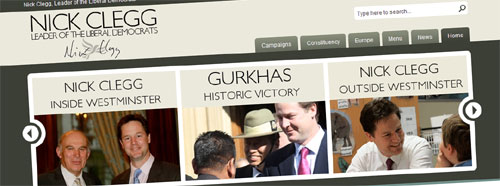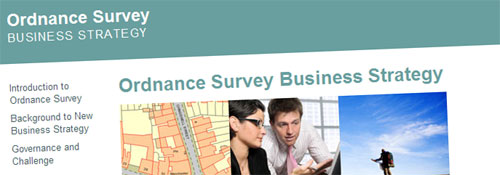 Just announced by the Cabinet Office: Cabinet Office man Andrew Stott, Deputy Government CIO and chair of the CTO Council has been announced as the new £120k/yr Director of Digital Engagement. An appointment from the government IT angle, rather than the social media angle. Hmm.
Just announced by the Cabinet Office: Cabinet Office man Andrew Stott, Deputy Government CIO and chair of the CTO Council has been announced as the new £120k/yr Director of Digital Engagement. An appointment from the government IT angle, rather than the social media angle. Hmm.
The Cabinet Office press release plays up his Whitehall seniority and experience, but rather neglects the more ‘social web’ aspects of the appointment. So for reference, here are the key elements of the Job Description, sent out in February. I expect there will be plenty of discussion to come on this.
ROLE PROFILE
Background
The Government recognises the widespread use of the internet and in particular a huge increase in the use of digital communities and social media. It also recognises that despite significant advances in Government web, there is now an opportunity to significantly increase the degree to which Government engages with citizens through the web. In recognition of this, the Prime Minister has appointed a Minister for Digital Engagement at the Cabinet Office and we now seek to appoint a highly credible digital communicator to be Director of Digital Engagement.
Job Purpose
The Director of Digital Engagement will be based in Government Communications at the Cabinet Office and will work across Government departments to encourage, support and challenge them in moving from communicating to citizens on the web to conversing and collaborating with them through digital technology.
Job Description
The successful applicant will:
- Develop a strategy and implementation plan for extending digital engagement across Government
- Work with communication, policy and delivery officials in Government departments to embed digital engagement in the day to day working of Government
- Work with Directors of Communication to ensure that digital media are included in the reporting of reaction to Government policy and initiatives
- Work closely with web teams to ensure that digital communications are making the most effective and efficient use of hardware and software
- Act as head of profession for civil servants working on digital engagement
- Ensure that digital engagement is always a leading part of Government consultation
- Introduce new techniques and software for digital engagement, such as ‘jams’ into Government
- Convene an expert advisory group made up of the leading experts on digital engagement to provide advice to Ministers and act as a sounding-board for the Government’s digital engagement strategy
- Work closely with the Ministerial Group on Digital Engagement, delivering the work agreed at Cabinet on digital engagement
You will manage a small team, directly, but will have to manage relationships with a wide group of senior officials across Government. This will require developing working arrangements in which departmental officials feel they are accountable to the Director of Digital Engagement without the benefit of a formal line management arrangement. These relationships will be at Director and Director General level and may well involve five or six departments at any one time. The relationships will be across professions, involving policy and delivery officials as well as communications and IT. Since this is a new role charged with getting Government to work differently, you will have to develop these relationships from scratch in a pressured environment in which Ministerial expectations of delivery are high.
You will have a small budget, but two key purposes of the job are to assist Government in making effective use of current digital spend, which runs into many millions, and to enable departments to save significant sums on their engagement activities through switching from expensive face to face and postal methods to cheaper digital techniques. You will be accountable for leading Government’s new focus on digital engagement, which is central to Government priorities and with significant risk of reputational damage if this does not happen or Government gets it wrong.
You will be accountable to the Permanent Secretary – Government Communications and to the Minister for the Cabinet Office.
Judgement will be crucial in this role. It leads on the future of Government engagement with citizens through digital means. This means that the post will be breaking new ground on a daily basis, across Government. The agenda is politically very high profile and full of complex issues between and within departments that you will have to exercise very sensitive judgement on how to manage and resolve. You will have a level of professional expertise that is likely to mean that you will be unique in your ability to exercise judgement and provide advice to Ministers and Permanent Secretaries/ senior officials on matters within your remit.
Influence is a key aspect of this role. You will be required to exercise influence across departments with Ministers and senior officials to drive forward the future of digital engagement. This will require Government and individual departments to change the way they do business – from consulting citizens to collaborating with them on the development of policy and how public services are delivered to them. It will involve supporting Ministers and senior officials in entering conversations in which Government does not control the message or the dialogue. Giving Ministers and senior officials the confidence to do this will require influencing skills of the highest order. This role has few direct reports and little direct resource at its command. The ability to make change and delivery of challenging objectives happen by negotiation, persuasion and influence will be critical.
This is not a role for a generalist. The professional skills required are formidable. Engagement in the digital space is a young ‘profession’ and the job requires someone who would be acknowledged by their peer group to be a leader in this field. The successful candidate will have a CV that creates instant credibility and confidence with Ministers, senior officials and digital communicators in Whitehall.
Within six months the Director of Digital Engagement will have developed a strategy and implementation plan and be able to show concrete signs of momentum in executing the plan.
Within a year the Director of Digital engagement should be able to point to two departments whose use of digital engagement are recognised in the digital community as being world class
Within two years the use of world class digital engagement techniques should be embedded in the normal work of Government
In addition [to all the usual senior civil service stuff], there are a number of additional attributes for the role:
Essential
- Is a highly credible individual in digital communications
- Has run a public facing web site of significant size, for example for a broadscaster or newspaper; or has been a leading figure in getting a large organisation to engage through digital channels.
- Has innovated in web, beyond ‘web publishing’ and can demonstrate concrete personal examples of changing how organisations carry out their core functions using digital channels
- Understands the technology and software that enable excellent web development, and has experience of advising on its procurement and deployment
- Has experience of achieving change through influence, especially with policy and delivery officials
- Has the authority to be credible with Ministers and senior officials
Desirable
- Has experience of the workings of Government

 I must admit, I thought he’d gone already. But finally last night, the
I must admit, I thought he’d gone already. But finally last night, the 

